Arkansas, located in the southern United States, is a state known for its natural beauty, rich history, and vibrant culture. With its diverse geography ranging from the Ozark Mountains to the Mississippi River Delta, Arkansas offers a unique blend of outdoor adventure and cultural experiences. To help visitors and residents navigate this beautiful state, we have created a detailed map of Arkansas with cities and highways.
This map highlights Arkansas’s major cities, including Little Rock, Fayetteville, Fort Smith, and Hot Springs, as well as its primary highways and roads. Whether you’re planning a road trip or simply want to explore Arkansas’s unique landscape and culture, this map is an essential tool. So, grab your map and get ready to discover all that Arkansas has to offer, from its charming small towns to its stunning natural landmarks.
Printable Arkansas Map With Cities and Highways
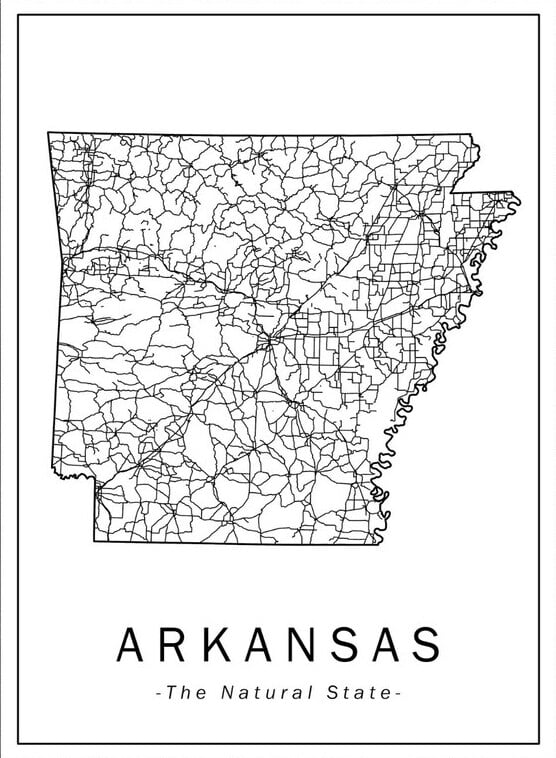
Cities
Arkadelphia

Arkadelphia is a city located in Clark County, Arkansas, and serves as the county seat. As of the 2020 census, the population was 10,380, making it one of the smaller cities in Arkansas. Despite its size, Arkadelphia is known for being home to two prestigious universities, Henderson State University and Ouachita Baptist University, which contribute significantly to the city’s economy and cultural scene.
The city is situated at the foothills of the Ouachita Mountains, making it a popular destination for outdoor enthusiasts who enjoy hiking, camping, and other outdoor activities. Arkadelphia was incorporated in 1857 and has a rich history that is celebrated throughout the city.
Visitors can explore the city’s historic downtown area, which features several well-preserved buildings and landmarks. Overall, Arkadelphia is a charming city that offers a unique blend of history, culture, and natural beauty.
Benton
Benton is a charming city located in Saline County, Arkansas, and serves as a suburb of Little Rock. Established in 1837, Benton is the county seat of Saline County and has a rich history that is celebrated throughout the city. The city was named after Missouri Senator Thomas Hart Benton and was formally chartered in 1836 when Arkansas became a state.
At the 2010 census, the city had a population of 30,681, which has grown over the years. In 2019, the population was estimated to be 36,820, making it one of the largest cities in Arkansas. Benton is part of the Little Rock–North Little Rock–Conway Metropolitan Statistical Area and is known for its excellent schools, thriving business community, and vibrant cultural scene.
Visitors can explore the city’s historic downtown area, which features several well-preserved buildings and landmarks. Overall, Benton is a vibrant city that offers a unique blend of history, culture, and modern amenities.
Bentonville

Bentonville is a thriving city located in Benton County, Arkansas, and serves as the county seat. As the tenth-largest city in Arkansas, Bentonville is centrally located in the county, with Rogers adjacent to the east. The city is known for being the birthplace of Walmart, the world’s largest retailer, and is home to the company’s world headquarters.
Bentonville is one of the four main cities in the three-county Northwest Arkansas Metropolitan Statistical Area, which is ranked 105th in terms of population in the United States, with 546,725 residents in 2020, according to the United States Census Bureau. The city itself had a population of 54,164 at the 2020 Census, an increase of 53% from the 2010 Census. Bentonville is considered one of the fastest-growing cities in the state and consistently ranks among the safest cities in Arkansas.
It is included in the Fayetteville–Springdale–Rogers Metropolitan Statistical Area and is known for its excellent schools, thriving business community, and vibrant cultural scene. Visitors can explore the city’s historic downtown area, which features several well-preserved buildings and landmarks. Overall, Bentonville is a dynamic city that offers a unique blend of history, culture, and modern amenities.
Blytheville

Blytheville is a city located in Mississippi County, Arkansas, and serves as the county seat. As the largest city in Mississippi County, Blytheville is approximately 60 miles (100 km) north of West Memphis. The city has a rich history that is celebrated throughout the area. At the 2020 census, the population of Blytheville was 13,406, which is down from 15,620 in 2010.
Despite its smaller size, Blytheville is known for its thriving business community, excellent schools, and vibrant cultural scene. Visitors can explore the city’s historic downtown area, which features several well-preserved buildings and landmarks. Blytheville is also home to several parks and outdoor recreational areas, making it a popular destination for outdoor enthusiasts. Overall, Blytheville is a charming city that offers a unique blend of history, culture, and natural beauty.
Cabot

Cabot is a vibrant city located in Lonoke County, Arkansas, and serves as a suburb of Little Rock. As the largest city in Lonoke County, Cabot has a population of 23,776, according to the 2010 census, and in 2019, the population was estimated to be 26,352, ranking it as the state’s 19th largest city, just behind Jacksonville.
Cabot is part of the Little Rock–North Little Rock–Conway Metropolitan Statistical Area and is known for its excellent schools, thriving business community, and vibrant cultural scene. Visitors can explore the city’s historic downtown area, which features several well-preserved buildings and landmarks. Cabot is also home to several parks and outdoor recreational areas, making it a popular destination for outdoor enthusiasts. Overall, Cabot is a charming city that offers a unique blend of history, culture, and natural beauty.
Camden
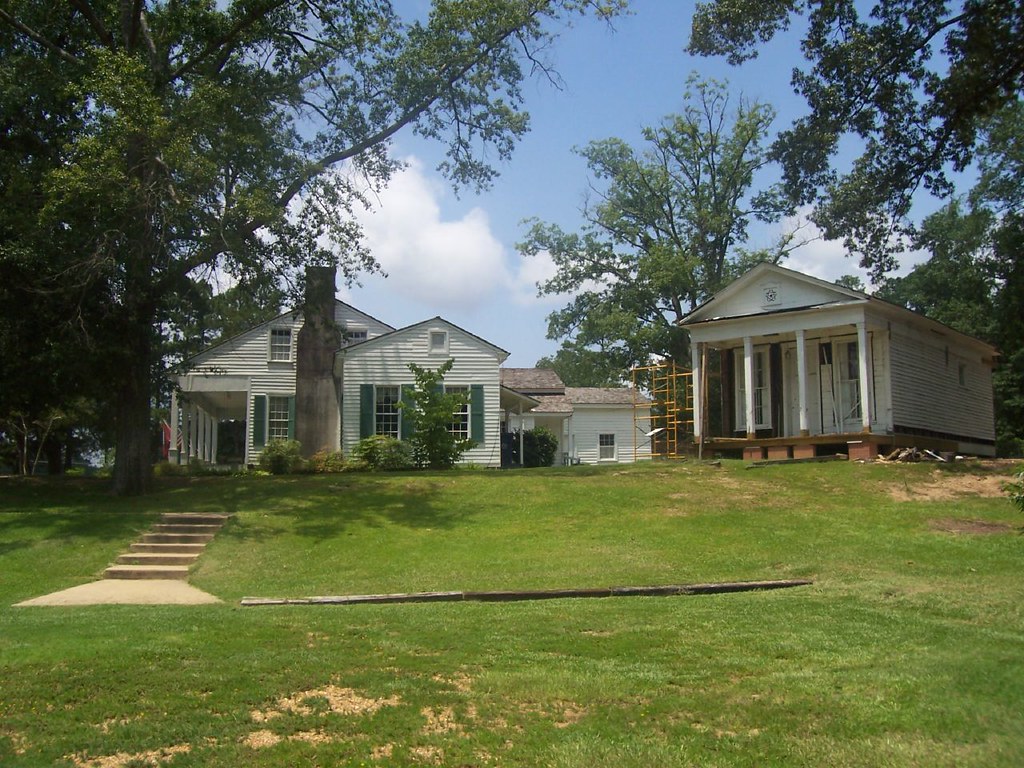
Camden is a historic city located in the south-central part of the U.S. state of Arkansas and serves as the county seat of Ouachita County. Situated on bluffs overlooking the Ouachita River, the city developed because of its proximity to the river. The recorded history of Camden began in 1782 when a Spanish military post was established on the site of an old French trading post called Écore à Fabri.
When Ouachita County was formed in 1842, American settlers changed the name to Camden. The city became an important port during the steamboat era when Camden became known as the “Queen City” of the Ouachita. In 1864, Camden became the unintended focus of the Red River Campaign, a major Civil War effort resulting in several significant battles.
Conway
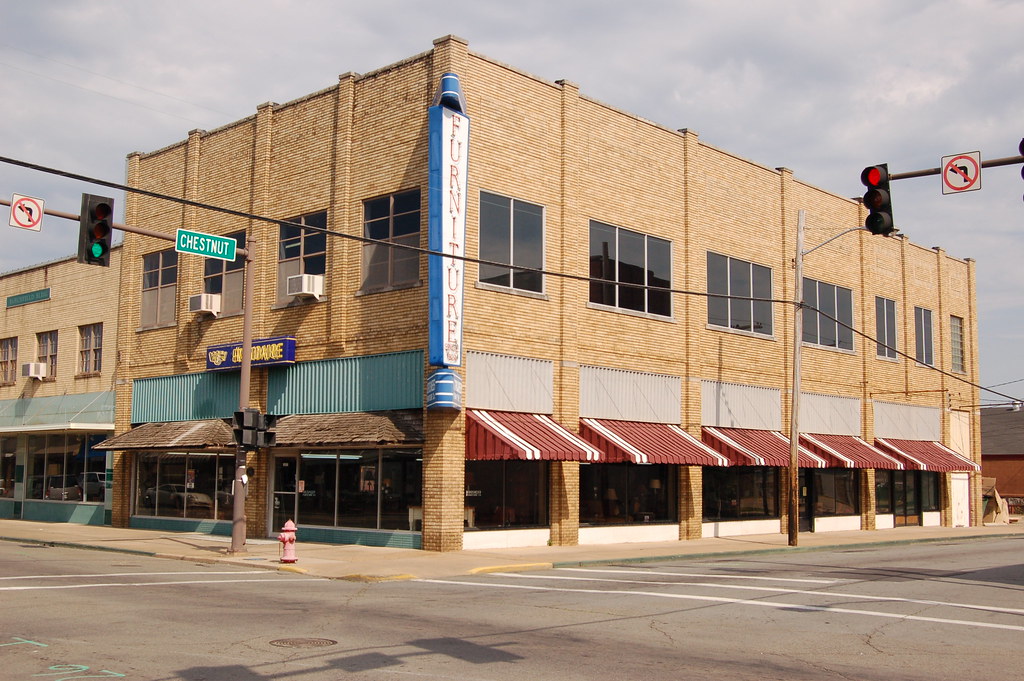
Conway is a bustling city located in the U.S. state of Arkansas and serves as the county seat of Faulkner County. As part of the state’s most populous Metropolitan Statistical Area, Central Arkansas, Conway is considered a suburb of Little Rock, but unlike many suburbs, the majority of its residents do not commute out of the city to work.
The city serves as a regional hub for shopping, education, healthcare, sports, and culture for Faulkner County and surrounding areas. Conway’s growth can be attributed to its thriving technology and higher education industries, with some of its largest employers being Acxiom, the University of Central Arkansas, Hendrix College, Insight Enterprises, and many technology start-up companies.
The city is also home to three post-secondary educational institutions, earning it the nickname “The City of Colleges.” Overall, Conway is a dynamic city that offers a unique blend of modern amenities, economic opportunities, and cultural attractions.
El Dorado
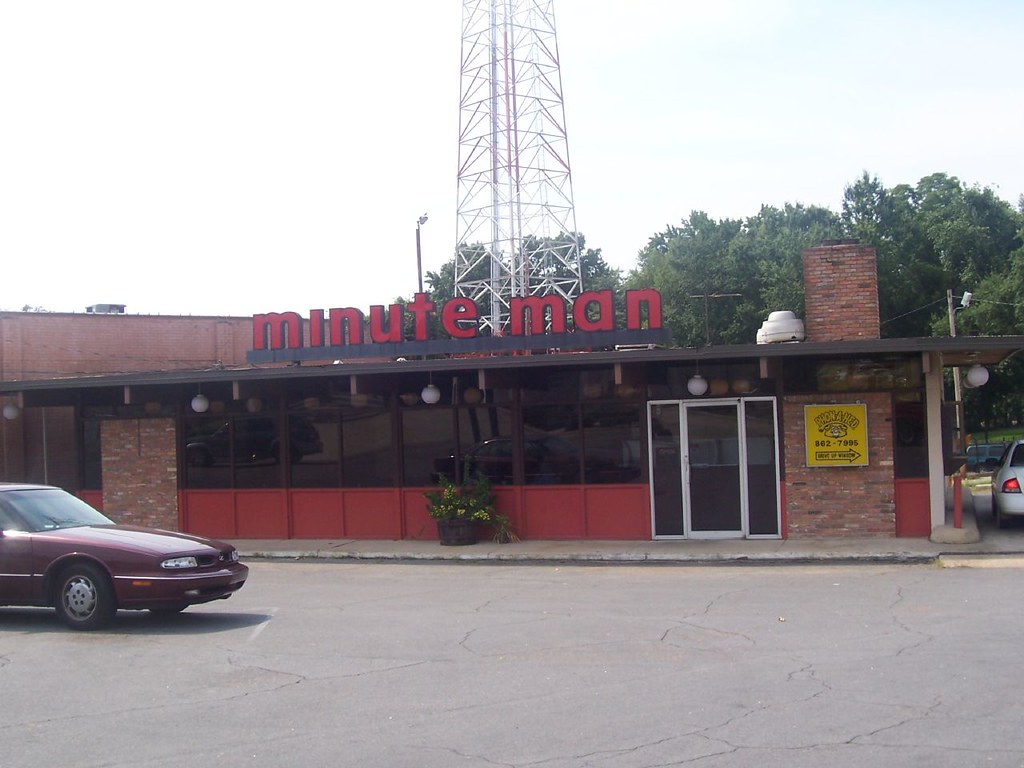
El Dorado is a vibrant city located in Union County, Arkansas, and serves as the county seat. Founded by Matthew Rainey, El Dorado is situated on the southern border of Arkansas and has a population of 18,884, according to the 2010 census.
The city is known for its thriving oil and gas industry, with the headquarters of the Arkansas Oil and Gas Commission, Murphy USA, Deltic Timber Corporation, and a DelekUS oil refinery all located here. El Dorado is also home to several cultural attractions, including the Murphy Arts District (MAD), a downtown arts district that hosts a variety of events and performances throughout the year, and the South Arkansas Arts Center (SAAC), a multi-cultural arts center.
The city is also home to South Arkansas Community College (SouthArk), which provides educational opportunities for residents of the area. Overall, El Dorado is the population, cultural, and business center of south-central Arkansas and offers a unique blend of history, culture, and modern amenities.
Fayetteville

Fayetteville is a bustling city located in the Ozarks region of Arkansas and serves as the county seat of Washington County. As the second-most populous city in Arkansas and the most populous city in Northwest Arkansas, Fayetteville is known for its vibrant culture, thriving business community, and natural beauty.
The city is situated on the outskirts of the Boston Mountains and is included in the three-county Northwest Arkansas Metropolitan Statistical Area, which is ranked 100th in terms of population in the United States, with 576,403 residents in 2022, according to the United States Census Bureau. Fayetteville had a population of 99,285 in 2022 and is a hub for education, with the University of Arkansas located in the city. Fayetteville was originally known as Washington until 1829 when it was renamed after Fayetteville, Tennessee, from which many of its settlers had come.
Forrest City
Forrest City is a historic city located in St. Francis County, Arkansas, and serves as the county seat. The city was named after General Nathan Bedford Forrest, a notable Confederate military leader, and is known for its rich history and cultural heritage. Shortly after the end of the Civil War, General Forrest had a construction crew camped in Forrest City, who were completing a railroad between Memphis and Little Rock.
Today, Forrest City is a thriving community that offers a unique blend of modern amenities and small-town charm. Visitors can explore the city’s historic downtown area, which features several well-preserved buildings and landmarks. Forrest City is also home to several parks and outdoor recreational areas, making it a popular destination for outdoor enthusiasts. Overall, Forrest City is a charming city that offers a unique glimpse into Arkansas’s rich history and cultural heritage.
Fort Smith

Fort Smith is a bustling city located in the western part of Arkansas and serves as one of the two county seats of Sebastian County. As the third-most populous city in Arkansas, Fort Smith has a population of 89,142, according to the 2020 census. The city is also the principal city of the Fort Smith, Arkansas–Oklahoma Metropolitan Statistical Area, which has a population of 298,592 residents and encompasses the Arkansas counties of Crawford, Franklin, and Sebastian, as well as the Oklahoma counties of LeFlore and Sequoyah.
Fort Smith is known for its rich history, cultural diversity, and thriving business community. The city played a significant role in the development of the American West, serving as a major military and trading post during the 19th century.
Harrison

Harrison is a city located in Boone County, Arkansas, and serves as the county seat. The city was named after Marcus LaRue Harrison, a surveyor who laid out the city along Crooked Creek at Stifler Springs. According to 2019 Census Bureau estimates, the population of the city was 13,069, making it the 30th largest city in Arkansas based on official 2019 estimates from the U.S. Census Bureau.
Harrison is the principal city of the Harrison Micropolitan Statistical Area, which includes all of Boone and Newton counties. However, the city also has a troubled history of racism. There were two race riots in the early 20th century, and the city has seen an influx of white supremacist organizations during the late 20th and early 21st centuries. Because of this, Harrison has been called “the most racist town in the United States” by several sources.
Despite this troubled history, Harrison is also home to a vibrant community of residents who are working to overcome the city’s past and build a more inclusive and welcoming future.
Hot Springs

Hot Springs is a picturesque resort city located in the Ouachita Mountains among the U.S. Interior Highlands and serves as the county seat of Garland County, Arkansas. The city is set among several natural hot springs for which it is named and has a population of 37,930, according to the 2020 United States Census.
The center of Hot Springs is the oldest federal reserve in the United States, preserved today as Hot Springs National Park. The hot spring water has been popularly believed for centuries to possess healing properties and was a subject of legend among several Native American tribes. Following federal protection in 1832, the city developed into a successful spa town.
Hot Springs has a rich history and has been home to Major League Baseball spring training, illegal gambling, speakeasies, and gangsters such as Al Capone, horse racing at Oaklawn Park, the Army and Navy Hospital, and 42nd President Bill Clinton. The city is also the birthplace of one of the largest Pentecostal denominations in the United States, the Assemblies of God. Overall, Hot Springs is a charming city that offers a unique blend of natural beauty, history, and culture, making it a popular destination for visitors and residents alike.
Jacksonville
Jacksonville is a charming city located in Pulaski County, Arkansas, and serves as a suburb of Little Rock. As of the 2010 census, the population of the city was 28,364, and it is part of the Little Rock–North Little Rock–Conway Metropolitan Statistical Area, which has a population of 729,135 people as of 2014. Jacksonville is known for its small-town charm and friendly community, making it a popular destination for visitors and residents alike.
The city offers a variety of recreational opportunities, including several parks and outdoor recreational areas. Visitors can explore the city’s historic downtown area, which features several well-preserved buildings and landmarks. Jacksonville is also home to several schools, making it a popular destination for families. Overall, Jacksonville is a thriving community that offers a unique blend of small-town charm and modern amenities, making it a great place to live, work, and visit.
Jonesboro

Jonesboro is a vibrant city located on Crowley’s Ridge in the northeastern corner of Arkansas. The city serves as one of the two county seats of Craighead County and is known for its rich history, cultural diversity, and thriving business community. In 2023, Jonesboro had a population of 81,969, making it the fifth-largest city in Arkansas at the time. The Jonesboro metropolitan area had a population of 135,287 in 2023, and the Jonesboro-Paragould Combined Statistical Area had a population of 179,932.
Jonesboro is the home of Arkansas State University and is the cultural and economic center of Northeast Arkansas. The city offers a wide range of recreational opportunities, including several parks and outdoor recreational areas. Visitors can explore the city’s vibrant downtown area, which features several well-preserved buildings and landmarks.
Jonesboro is also home to several museums and historic sites that offer a glimpse into its storied past. Overall, Jonesboro is a dynamic city that offers a unique blend of history, culture, and modern amenities, making it a popular destination for visitors and residents alike.
Little Rock
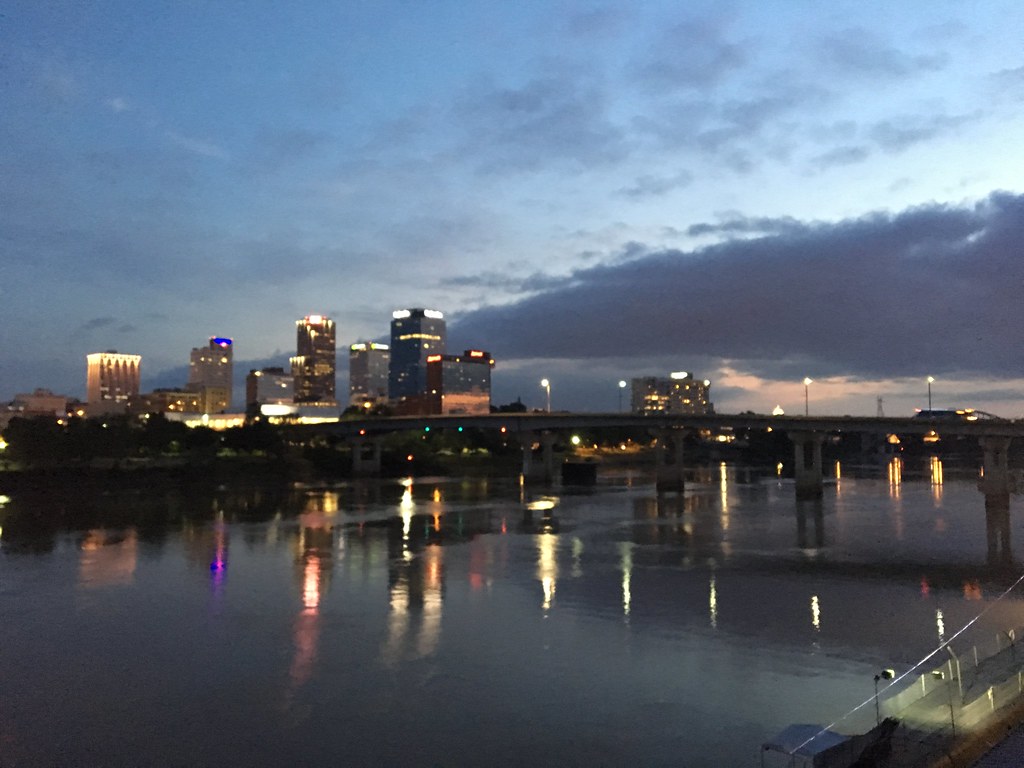
Little Rock is the capital and most populous city of Arkansas. The city has a population of 204,405 as of 2022, and it is the county seat of Pulaski County. Little Rock is located on the south bank of the Arkansas River, close to the state’s geographic center in Central Arkansas. The city derived its name from a rock formation along the river, named the “Little Rock” by the French explorer Jean-Baptiste Bénard de la Harpe in 1722. The capital of the Arkansas Territory was moved to Little Rock from Arkansas Post in 1821.
Little Rock is also the cultural and economic center of Arkansas, offering a wide range of recreational opportunities, including several parks and outdoor recreational areas. Visitors can explore the city’s vibrant downtown area, which features several well-preserved buildings and landmarks. Little Rock is also home to several museums and historic sites that offer a glimpse into its storied past. The six-county Little Rock metropolitan area is the 81st-most populous in the United States with 748,031 residents according to the 2020 census.
Magnolia
Magnolia is a charming city located in Columbia County, Arkansas, and serves as the county seat. As of the 2010 census, the population of the city was 11,577. Magnolia is known for its small-town charm, friendly community, and rich history. The city offers a variety of recreational opportunities, including several parks and outdoor recreational areas. Visitors can explore the city’s historic downtown area, which features several well-preserved buildings and landmarks.
Magnolia is also home to the World’s Largest Charcoal Grill and the World Championship Steak Cookoff, which is part of the Magnolia Blossom Festival. The festival is a popular event that draws visitors from all over the region and features a variety of activities, including live music, food vendors, and carnival rides. Overall, Magnolia is a thriving community that offers a unique blend of small-town charm and modern amenities, making it a great place to live, work, and visit.
Mountain Home
Mountain Home is a picturesque city located in the southern Ozark Mountains near the northern state border with Missouri. The city serves as the county seat of Baxter County and has a population of 12,448, according to the 2010 census. The city and its micropolitan area combined have a total population of 41,307 persons, encompassing the majority of Baxter County.
Mountain Home is known for its natural beauty, friendly community, and thriving business community. The city offers a variety of recreational opportunities, including several parks and outdoor recreational areas. Visitors can explore the city’s vibrant downtown area, which features several well-preserved buildings and landmarks.
Mountain Home is also home to several museums and historic sites that offer a glimpse into its storied past. Overall, Mountain Home is a dynamic city that offers a unique blend of natural beauty, history, and culture, making it a popular destination for visitors and residents alike.
North Little Rock

North Little Rock, often referred to as “NLR,” is a thriving city located in Pulaski County, Arkansas, and serves as the twin city of Little Rock. The city has a population of 64,591, according to the 2020 census. North Little Rock has been experiencing significant beautification efforts over the past few years, resulting in renewed interest from young families and professionals.
The Argenta Historic District downtown has turned into a thriving entertainment district offering theaters, fine dining, bars, gastropubs, and boutiques. The city is also home to Dickey-Stephens Park, which hosts the Arkansas Travelers minor league baseball team, and Simmons Bank Arena, the metropolitan area’s main entertainment venue. Farther west is Burns Park, one of the largest municipal parks in the United States, offering a wide range of recreational opportunities, including hiking trails, sports fields, and a golf course.
Paragould
Paragould is a vibrant city located in northeastern Arkansas and serves as the county seat of Greene County. The city is the 19th-largest in Arkansas and is situated on the eastern edge of Crowley’s Ridge, a geologic anomaly contained within the Arkansas delta. Paragould is the principal city of the Paragould, Arkansas Micropolitan Statistical Area and is also a part of the Jonesboro-Paragould Combined Statistical Area.
The Paragould micropolitan area’s population was 42,090 at the 2010 census, and the Jonesboro-Paragould Combined Statistical Area’s population was 163,116. The city had a population of 26,113 at the 2010 census and an estimated population of 28,986 in 2019.
Paragould offers a variety of recreational opportunities, including several parks and outdoor recreational areas. Visitors can explore the city’s vibrant downtown area, which features several well-preserved buildings and landmarks. Paragould is also home to several museums and historic sites that offer a glimpse into its storied past.
Pine Bluff

Pine Bluff is a thriving city located in the Southeast section of the Arkansas Delta and serves as the county seat of Jefferson County. The city is the eleventh-largest in Arkansas and is the principal city of the Pine Bluff Metropolitan Statistical Area and part of the Little Rock-North Little Rock-Pine Bluff Combined Statistical Area.
According to the 2020 census, the population of the city was 41,253. Pine Bluff’s topography is flat with wide expanses of farmland, similar to other places in the Delta Lowlands. The city has numerous creeks, streams, and bayous, including Bayou Bartholomew, the longest bayou in the world and the second most ecologically diverse stream in the United States. Pine Bluff is also home to several large bodies of water, including Lake Pine Bluff, Lake Langhofer (Slack Water Harbor), and the Arkansas River.
Rogers

Rogers is a bustling city located in Benton County, Arkansas, and is part of the Northwest Arkansas region, one of the fastest-growing metro areas in the country. The city is situated in the Ozarks and is known for its natural beauty, friendly community, and thriving business community.
Rogers is home to the first Walmart store, and the corporate headquarters of Walmart is located in neighboring Bentonville. In addition, Daisy Outdoor Products, known for its air rifles, has both its headquarters and Airgun Museum in Rogers. The city is also home to several popular shopping centers, including the Pinnacle Hills Promenade, which offers a wide range of shopping, dining, and entertainment options.
Rogers is also home to the Walmart AMP, a popular music venue that has housed performances by big-name artists and local performers alike. Overall, Rogers is a dynamic city that offers a unique blend of history, culture, and modern amenities, making it a popular destination for visitors and residents alike.
Russellville

Russellville is a vibrant city located in Pope County, Arkansas, and serves as the county seat and largest city with a 2021 estimated population of 29,338. The city is home to Arkansas Tech University and is known for its thriving business community, friendly community, and natural beauty. Arkansas Nuclear One, Arkansas’ only nuclear power plant, is located nearby.
Russellville borders Lake Dardanelle and the Arkansas River, offering a wide range of recreational opportunities, including fishing, boating, and hiking. The city is the principal city of the Russellville Micropolitan Statistical Area, which includes all of Pope and Yell counties. Under Arkansas Code Title 14, Russellville is a city of the first class.
Visitors can explore the city’s vibrant downtown area, which features several well-preserved buildings and landmarks. Overall, Russellville is a dynamic city that offers a unique blend of history, culture, and modern amenities, making it a popular destination for visitors and residents alike.
Searcy

Searcy is a bustling city located in White County, Arkansas, and serves as the county seat and largest city with a population of 23,767 according to 2019 Census Bureau estimates. The city is the principal city of the Searcy, AR Micropolitan Statistical Area, which encompasses all of White County. Searcy takes its name from Richard Searcy, a judge for the Superior Court of the Arkansas Territory.
The city is a college town and is home to Harding University and ASU-Searcy, offering a vibrant and diverse community. Visitors can explore the city’s historic downtown area, which features several well-preserved buildings and landmarks. Searcy offers a variety of recreational opportunities, including several parks and outdoor recreational areas. The city is also home to several museums and historic sites that offer a glimpse into its storied past.
Sherwood
Sherwood is a thriving city located in Pulaski County, Arkansas, with a population of 32,731 according to the 2020 census. The city is part of the Little Rock−North Little Rock−Conway Metropolitan Statistical Area, which has a population of 699,757 people according to the 2010 census. Sherwood is known for its natural beauty, friendly community, and thriving business community.
The city offers a variety of recreational opportunities, including several parks and outdoor recreational areas. Visitors can explore the city’s vibrant downtown area, which features several well-preserved buildings and landmarks. Sherwood is also home to several museums and historic sites that offer a glimpse into its storied past. Overall, Sherwood is a dynamic city that offers a unique blend of history, culture, and modern amenities, making it a popular destination for visitors and residents alike.
Siloam Springs
Siloam Springs is a charming city located on the western edge of the Northwest Arkansas metropolitan area in Benton County, Arkansas. The city has a population of 17,287 according to the 2020 census. Siloam Springs was founded in 1882 and was characterized by the purported healing powers of the spring water feeding Sager Creek and trading with nearby Native American tribes.
The city shares a border on the Arkansas–Oklahoma state line with the city of West Siloam Springs, Oklahoma, which is within the Cherokee Nation territory. Siloam Springs is home to John Brown University, a private, Christian liberal arts university. The city offers a variety of recreational opportunities, including several parks and outdoor recreational areas.
Visitors can explore the city’s vibrant downtown area, which features several well-preserved buildings and landmarks. Overall, Siloam Springs is a dynamic city that offers a unique blend of history, culture, and modern amenities, making it a popular destination for visitors and residents alike.
Springdale
Springdale is a vibrant city located in both Washington and Benton counties in Northwest Arkansas. The city is the fourth-largest in Arkansas and is situated on the Springfield Plateau deep in the Ozark Mountains, making it an important industrial city for the region. In addition to several trucking companies, Springdale is home to the world headquarters of Tyson Foods, the world’s largest meat-producing company.
Originally named Shiloh, the city changed its name to Springdale when applying for a post office in 1872. The city is included in the four-county Northwest Arkansas Metropolitan Statistical Area, which is ranked 102nd in terms of population in the United States with 546,725 in 2020 according to the United States Census Bureau. The city had a population of 84,161 in the 2020 Census.
Visitors can explore the city’s vibrant downtown area, which features several well-preserved buildings and landmarks. Springdale offers a variety of recreational opportunities, including several parks and outdoor recreational areas. Overall, Springdale is a dynamic city that offers a unique blend of history, culture, and modern amenities, making it a popular destination for visitors and residents alike.
Texarkana
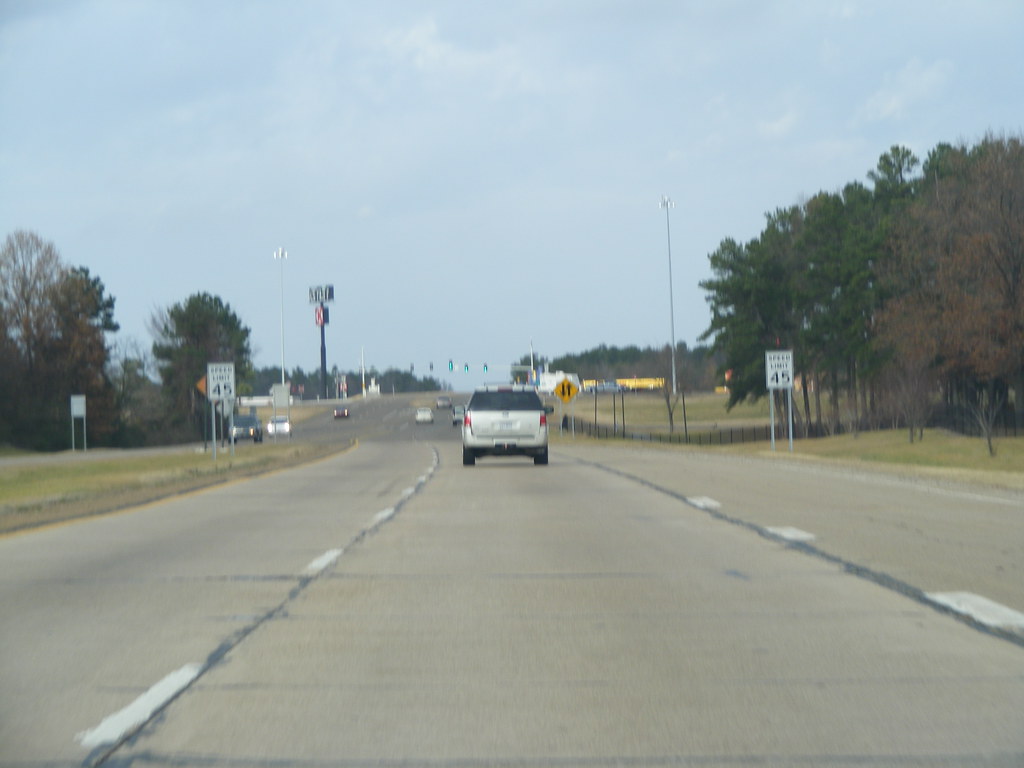
Texarkana is a vibrant city located on the southwest border of the state of Arkansas and serves as the county seat of Miller County. The city has a population of 29,387 according to the 2020 census and was founded at a railroad intersection on December 8, 1873, and was incorporated in Arkansas on August 10, 1880. Texarkana is located across the state line from its twin city of Texarkana, Texas, and the two cities together form the Texarkana metropolitan area.
The metropolitan area was ranked 289th in the United States with a population of 147,174 in 2021, according to the United States Census Bureau. Visitors can explore the city’s vibrant downtown area, which features several well-preserved buildings and landmarks. Texarkana offers a variety of recreational opportunities, including several parks and outdoor recreational areas. The city is also home to several museums and historic sites that offer a glimpse into its storied past.
Van Buren
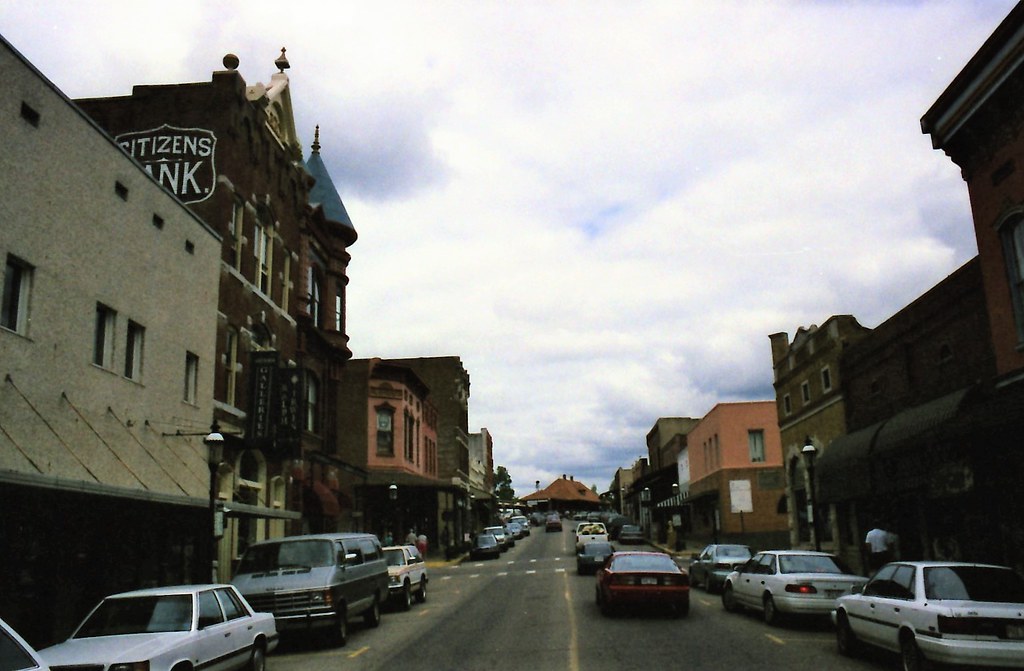
Van Buren is a charming city located in Crawford County, Arkansas, and serves as the county seat with a population of 23,218 according to the 2020 census. The city is the second-largest in the Fort Smith, Arkansas–Oklahoma Metropolitan Statistical Area and is located directly northeast of Fort Smith at the Interstate 40 – Interstate 540 junction. Van Buren was incorporated in 1845 and has a rich history that is evident in its well-preserved buildings and landmarks.
Visitors can explore the city’s vibrant downtown area, which features several historic buildings and museums. Van Buren offers a variety of recreational opportunities, including several parks and outdoor recreational areas. The city is also home to several annual events and festivals that celebrate its culture and heritage. Overall, Van Buren is a dynamic city that offers a unique blend of history, culture, and modern amenities, making it a popular destination for visitors and residents alike.
West Memphis

West Memphis is a bustling city located in Crittenden County, Arkansas, and serves as the largest city with a population of 26,245 according to the 2010 census, ranking it as the state’s 18th largest city, behind Bella Vista. The city is part of the Memphis metropolitan area and is located directly across the Mississippi River from Memphis, Tennessee.
West Memphis offers a variety of recreational opportunities, including several parks and outdoor recreational areas. Visitors can explore the city’s vibrant downtown area, which features several well-preserved buildings and landmarks. The city is also home to several museums and historic sites that offer a glimpse into its storied past.
West Memphis is known for its rich culture, friendly community, and thriving business community. Overall, West Memphis is a dynamic city that offers a unique blend of history, culture, and modern amenities, making it a popular destination for visitors and residents alike.
Highways
Route 49
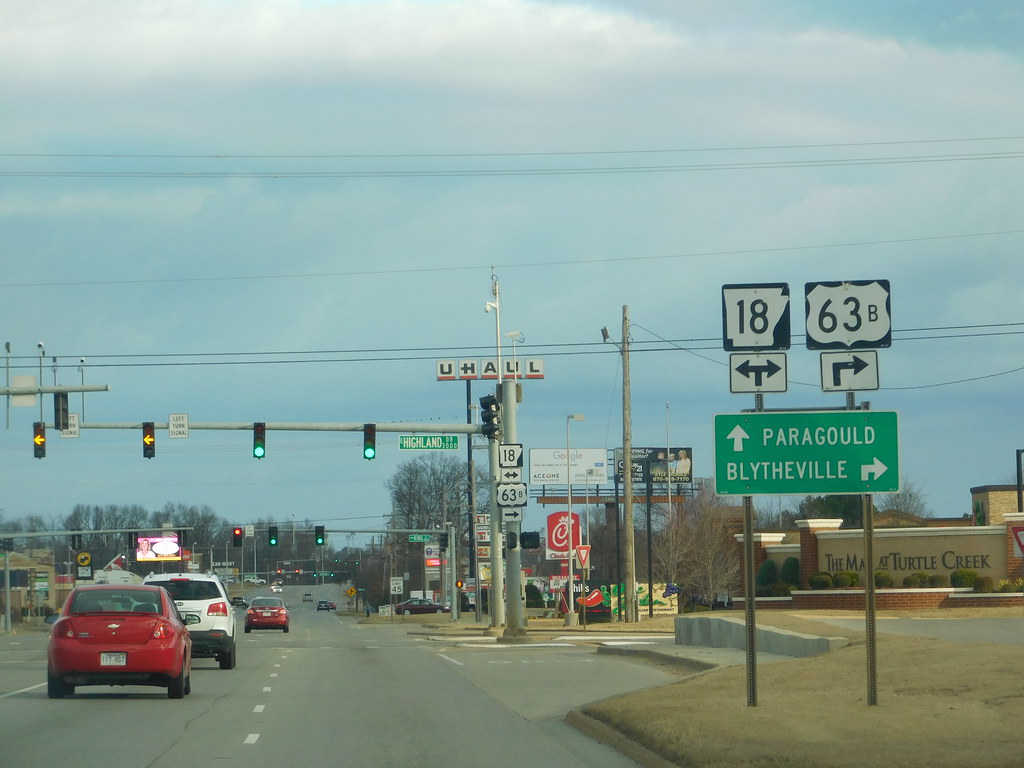
U.S. Route 49 (US 49) is a north–south United States highway that spans approximately 516 miles (830 km). The highway’s northern terminus is in Piggott, Arkansas, at an intersection with US Route 62/Highway 1/Highway 139 (US 62/AR 1/AR 139), while its southern terminus is in Gulfport, Mississippi, at an intersection with U.S. Route 90. US 49 is not only a significant transportation route but also a cultural icon.
It was at the junction of US 49 and U.S. Route 61 that blues singer Robert Johnson is said to have sold his soul to the Devil. The highway is also the subject of songs by Big Joe Williams and Howlin’ Wolf (Chester Arthur Burnett), making it an important part of the musical heritage of the region.
Route 62

U.S. Route 62 (US 62) is an important U.S. highway that runs for 329.9 miles from the Oklahoma border near Summers east to the Missouri border in St. Francis, serving the northern portion of Arkansas. The route passes through several cities and towns, including Fayetteville, Springdale, Bentonville, Harrison, Mountain Home, Pocahontas, and Piggott.
US 62 also runs concurrently with several highways in Arkansas, including Interstate 49 and U.S. Route 71 between Fayetteville and Bentonville, U.S. Route 412 through much of the state, U.S. Route 65 in the Harrison area, and U.S. Route 63 and U.S. Route 67 (Future Interstate 57) in northeast Arkansas. With its many connections and routes, US 62 is an important transportation route in Arkansas, connecting the state’s northern cities and towns to the rest of the country.
Route 63

U.S. Highway 63 (US 63) is an important north-south U.S. highway that runs through the eastern part of Arkansas, serving rural areas of South Arkansas and the Arkansas Delta, as well as Pine Bluff and Jonesboro. The highway enters the state from Louisiana concurrent with US 167 in Junction City and exits the state at Mammoth Spring, traveling into Missouri. US 63 is a vital transportation route in Arkansas, connecting the state’s rural communities to larger cities and towns.
Along the way, travelers can enjoy the scenic beauty of the Arkansas Delta and explore the unique culture and history of the region. Overall, US 63 plays an important role in the transportation and economic development of Arkansas.
Route 64
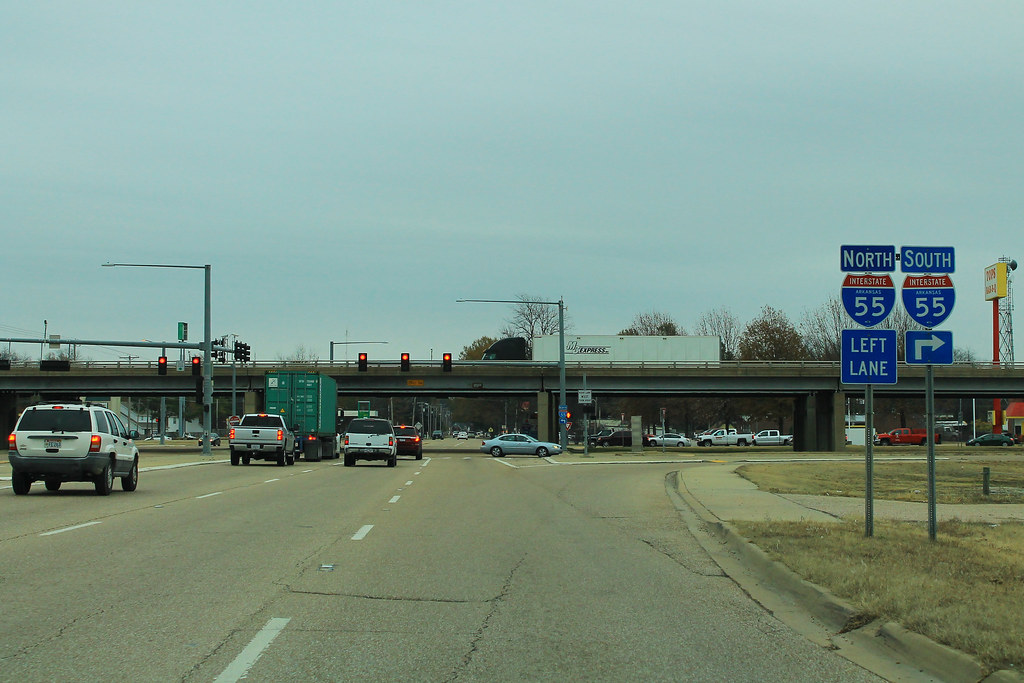
U.S. Route 64 is a significant U.S. highway that runs for 246.35 miles (396.46 km) from the Oklahoma border in Fort Smith east to the Tennessee border in Memphis, passing through several cities and towns, including Fort Smith, Clarksville, Russellville, Conway, Searcy, and West Memphis. US 64 is an important transportation route in Arkansas, connecting the state’s western and eastern regions.
The highway runs parallel to Interstate 40 until Conway, where I-40 takes a more southerly route. Along the way, travelers can enjoy the scenic beauty of the Arkansas River Valley and explore the unique culture and history of the region. Overall, US 64 plays an important role in the transportation and economic life of Arkansas.
Route 65

U.S. Highway 65 (US 65) is a significant north-south highway that runs for 309.52 miles (498.12 km) through southeastern and north-central Arkansas. The highway enters the state from Louisiana south of Eudora, running concurrently with the Great River Road, and exits into Missouri northwest of Omaha. US 65 passes through several major cities, including Pine Bluff and Little Rock, making it an important transportation route for both residents and visitors.
Along the way, travelers can enjoy the scenic beauty of the Arkansas River Valley and explore the unique culture and history of the region. Overall, US 65 plays a vital role in connecting Arkansas to neighboring states and the rest of the country.
Route 67
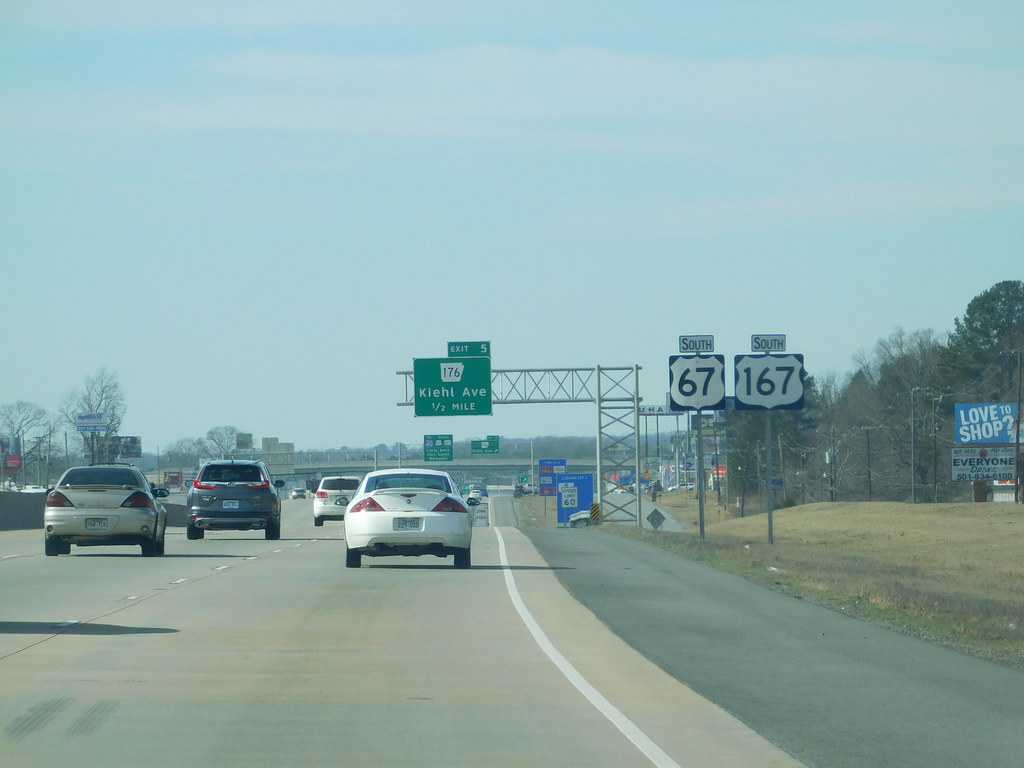
U.S. Route 67 (US 67) is a significant U.S. highway that runs for 279.15 miles (449.25 km) through Arkansas, connecting the state’s major cities and towns. The highway runs from the Texas border in Texarkana northeast to the Missouri border near Corning, passing through several cities and towns, including Hope, Benton, Little Rock, Jacksonville, Cabot, Beebe, Walnut Ridge, and Pocahontas.
US 67 is an important transportation route in Arkansas, connecting the state’s northeastern and southwestern regions. Along the way, travelers can enjoy the scenic beauty of the Ozark Mountains and explore the unique culture and history of the region. US 67 plays a vital role in the transportation and economic culture of Arkansas.
Route 70
U.S. Highway 70 (US 70) is an important east-west highway that runs for 286.9 miles (461.7 km) across the heart of Arkansas. The highway enters the state from Oklahoma west of De Queen and exits to Tennessee at Memphis, running concurrently with Interstate 55 (I-55), US 61, US 64, and US 79. US 70 passes through several major cities, including Hot Springs, Little Rock, North Little Rock, and West Memphis, making it an important transportation route for both residents and visitors.
Along the way, travelers can enjoy the scenic beauty of the Ouachita Mountains and explore the unique culture and history of the region. Overall, US 70 plays a vital role in connecting Arkansas to neighboring states and the rest of the country.
Route 71
U.S. Highway 71 (US 71) is a significant U.S. highway that runs from Krotz Springs, Louisiana to the Fort Frances–International Falls International Bridge at the Canadian border. In Arkansas, the highway spans from the Louisiana state line near Doddridge to the Missouri state line near Bella Vista, passing through several major cities and towns, including Texarkana, Fort Smith, and Northwest Arkansas. In Texarkana, the highway runs along State Line Avenue with US 59 and partially runs in Texas, with northbound traffic in Arkansas and southbound in Texas.
US 71 is an important transportation route in Arkansas, connecting the state’s southern and northern regions. Along the way, travelers can enjoy the scenic beauty of the Ozark Mountains and explore the unique culture and history of the region. Overall, US 71 plays an integral role in the transportation and economy of Arkansas.
Route 79

U.S. Route 79 (US 79) is an important north-south highway that spans across Arkansas, passing through several cities and towns. The highway enters the state from Louisiana, traveling through Emerson and Magnolia, where it briefly runs concurrently with US 82. US 79 then turns northeast, passing through Camden, where it intersects US 278, and Fordyce, where it briefly runs concurrently with US 167. In Pine Bluff, US 79 joins the Interstate 530 freeway, while a business route continues through downtown.
After the freeway ends, US 79 and US 63 run concurrently and leave the city towards the north, staying joined until Stuttgart. US 79 continues to the east and northeast, passing through Marianna and Hughes before turning due north to an intersection with Interstate 40 near Jennette. US 79 joins I-40, and the two routes stay cosigned through the concurrency with Interstate 55 in West Memphis before crossing the Mississippi River at the Memphis & Arkansas Bridge into Memphis. Overall, US 79 plays an important role in connecting Arkansas to neighboring states and the rest of the country.
Route 82
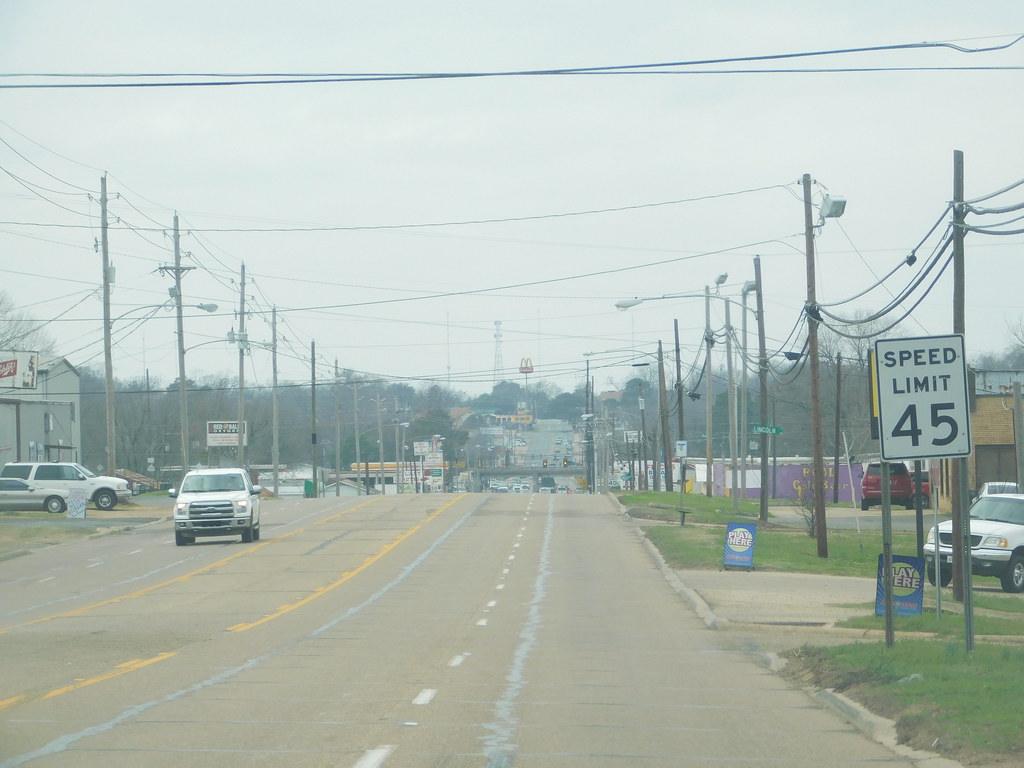
U.S. Highway 82 (US 82) is a significant east-west highway that runs across the lowest tier of counties in Arkansas. The highway enters the state from Texas, running concurrently with US Highway 67, at a junction with US Highway 71 on the border between Texarkana, Texas and Texarkana, Arkansas. US 82 is an important transportation route in Arkansas, connecting the state’s western and eastern regions.
Along the way, travelers can enjoy the scenic beauty of the Mississippi River Delta and explore the unique culture and history of the region. The highway leaves Arkansas on the Lake Village Bridge over the Mississippi River near Lake Village, crossing into Mississippi. Overall, US 82 plays a vital role in the transportation and economic development of Arkansas.
Route 165
U.S. Highway 165 (US 165) is an important highway that spans across southeastern Arkansas, passing through several cities and towns. The highway enters Arkansas south of Wilmot in Ashley County, running through bayous and marshlands before intersecting Highway 52 and Highway 173 in the town. US 165 then passes through Parkdale, where it intersects Highway 8 and Highway 209, and Portland, where it intersects Highway 160 before entering Montrose.
In Montrose, US 165 passes under U.S. Route 82 and intersects US 82 Business (US 82B) downtown. The highway continues north near Cut-off Creek Wildlife Management Area to enter Drew County, passing through Jerome near the Jerome Elementary School No. 22. US 165 then enters Chicot County near Dermott, where it intersects Highway 208 and Highway 35. Northeast of town, the route intersects its parent route (US 65), which forms a concurrency with Dumas.
The route breaks from US 65 at Pickens Street, with Highway 277 shooting from the route east of Cypress Creek. US 165 then forms a concurrency with Highway 1 for 24.99 miles (40.22 km) beginning at Back Gate, intersecting Highway 212 before crossing the Arkansas River on the Pendleton Bridge. Overall, US 165 plays an important role in connecting southeastern Arkansas to other regions of the state.
Route 167
Highway 167 is an important highway that runs through southern Arkansas, passing through several cities and towns. The highway enters Arkansas at Junction City, paired with U.S. Highway 63, and runs northeast through rural Union County to a junction with Highway 7 near the historic Joel Smith House. The three highways begin a concurrency and intersect U.S. Highway 82 shortly after entering El Dorado.
North of this junction is a grade-separated intersection with U.S. Highway 82B and U.S. Highway 167B, leading into downtown El Dorado and the El Dorado Commercial Historic District. The next intersection is with Main Street and is also grade-separated. Highway 63 breaks from the aforementioned concurrency to the east toward Warren.
Highway 167 continues north through sparsely populated parts of southern Calhoun County prior to entering Hampton, the county seat. The highway intersects U.S. Highway 278 (Main Street) and passes by the historic Calhoun County Courthouse and the Hampton Waterworks, both listed on the National Register of Historic Places. In the northern part of the county, Highway 167 meets another of its three business routes in the state, which runs into downtown Thornton.
Highway 167 continues northeast to a junction with U.S. Highway 79, and the two routes begin a concurrency toward Fordyce. Overall, Highway 167 plays an important role in connecting southern Arkansas to other regions of the state.
Route 270

U.S. Highway 270 (US 270) is a significant highway that runs across Arkansas, passing through several cities and towns. The highway enters Arkansas with US 59, running east to Acorn, where it meets US 71. US 270 then travels 15 miles north on US 71 to Y City, where it splits off and continues east.
The route then meets AR 88 in Pencil Bluff and AR 27 in Mt. Ida before heading to Hot Springs. In Hot Springs, US 270 meets US 70 southwest of town and runs concurrently with it around Hot Springs using the Dr. Martin Luther King Jr. Expressway before leaving the freeway and running along Malvern Avenue southeast of the city.
US 270 then intersects with I-30 just outside Malvern, running a short distance northeast on the freeway before interchanging with the George Hopkins Loop bypass and running south around the city. After meeting with US 67 east of town, the alignment then turns east-southeast, meeting AR 229 in Poyen and AR 190/AR 291 in Prattsville before crossing paths with US 167 in Sheridan.
The route trails east towards Pine Bluff, terminating at and interchanging with I-530/US 65 in White Hall. Overall, US 270 plays an important role in connecting Arkansas to neighboring states and the rest of the country.
Route 412

U.S. Highway 412 (US 412) is a significant highway that runs across northern Arkansas for about 290 miles (470 km). The route begins at the Oklahoma state line near Siloam Springs, passing through several cities and towns, including Huntsville, Harrison, and Walnut Ridge, before ending at the Missouri state line east of Paragould. US 412 is an important transportation route in Arkansas, connecting the state’s western and eastern regions.
Along the way, travelers can enjoy the scenic beauty of the Ozark Mountains and explore the unique culture and history of the region. Overall, US 412 plays a vital role in the transportation and economic development of Arkansas.
Route 425
Highway 425 is an important highway that runs through rural Ashley County in Arkansas. The route enters Arkansas near Rawls and runs north through farmland and trees. Highway 425 forms a concurrency with US 82 east of Crosett, and the two routes continue north to Hamburg, the county seat of Ashley County, where they are joined by Highway 8, which runs east and west across the southern part of the state.
North of the junction, the three routes pass the First United Methodist Church and historic properties within the Hamburg Commercial Historic District before US 82 turns east at St. Louis Street, and US 425/AR 8 runs north out of Hamburg. Further north, US 425 intersects with Highway 133 in Lacey and Highway 172 before entering Monticello. The highway serves the University of Arkansas at Monticello in the southern part of town, also passing the Monticello Elementary School.
US 425 intersects University Drive and continues north as a four-lane road. There is an interchange with Jordan Drive (AR 83S), after which US 425 enters residential Monticello. The route now curves to the west side of town, with Main Street (AR 83) serving downtown Monticello. Overall, Highway 425 plays an important role in connecting rural areas of Arkansas to other regions of the state.
Interstates
Interstate 55
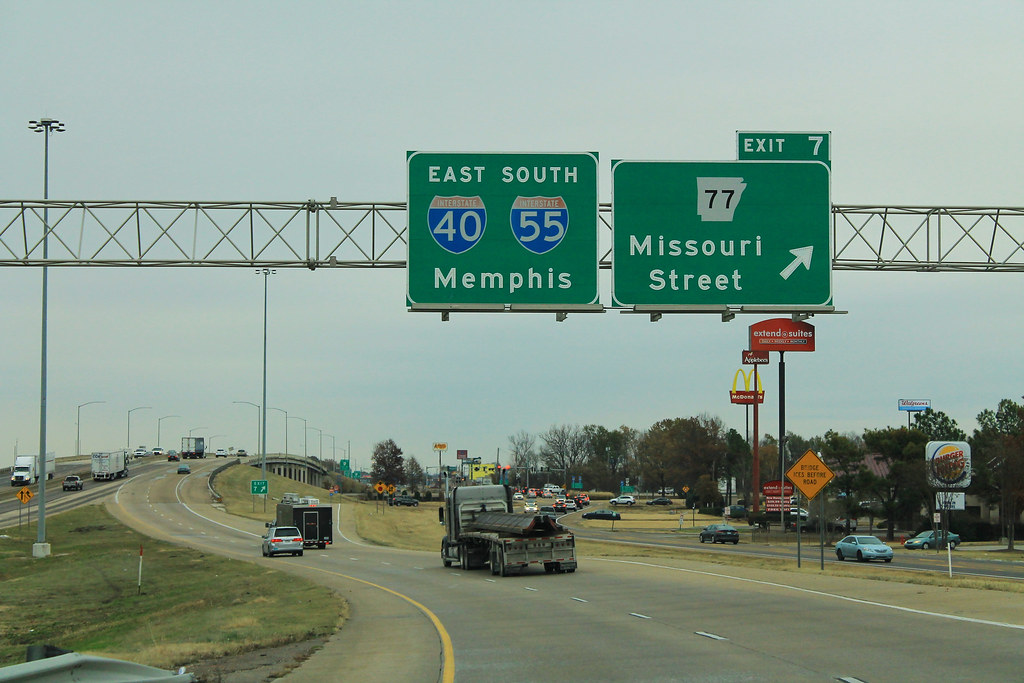
Interstate 55 (I-55) is an important north-south Interstate Highway that spans across three states, including a 72.22-mile (116.23 km) section in Arkansas. The route enters Arkansas on the Memphis & Arkansas Bridge over the Mississippi River from Memphis, and travels northward through northeast Arkansas, connecting the cities of West Memphis and Blytheville.
For the majority of its routing through Arkansas, I-55 generally follows U.S. Highway 61 (US 61). The highway overlaps I-40 in West Memphis and has a junction with I-555, a spur route to Jonesboro, in Turrell. I-55 continues into Missouri, heading to St. Louis, Missouri. Overall, I-55 plays an important role in connecting the southern and northern regions of the United States and serves as a vital transportation route for both commercial and personal travel.
Interstate 30

Interstate 30 (I-30) is a major highway that runs through southwestern Arkansas, connecting several cities and towns. The highway enters Arkansas at Texarkana, the twin city of Texarkana, Texas, and intersects with I-49 before traveling northeast. Along the way, I-30 passes through Hope, the birthplace of former President Bill Clinton, as well as Prescott, Gurdon, Arkadelphia, and Malvern, where drivers can use US 70 or US 270 to travel into historic Hot Springs or beyond into Ouachita National Forest.
From Malvern, US 70 and US 67 join I-30 and stay with the Interstate into the Little Rock city limits. Northeast of Malvern, I-30 passes through Benton before reaching the Little Rock city limits. As I-30 enters Little Rock, I-430 leaves its parent route to create a western bypass of the city. Just south of downtown, I-30 meets the western terminus of I-440 and the northern terminus of another auxiliary route in I-530.
I-30 also creates one final auxiliary route in I-630, or the Wilbur D. Mills Freeway, which splits downtown Little Rock in an east-west direction before coming to its other end at I-430 just west of downtown. After passing I-630, I-30 crosses the Arkansas River into North Little Rock and comes to its eastern terminus at I-40, where it is joined by US 65, US 67, and US 167. Overall, I-30 plays a vital role in connecting southwestern Arkansas to other regions of the state and beyond.
Interstate 40
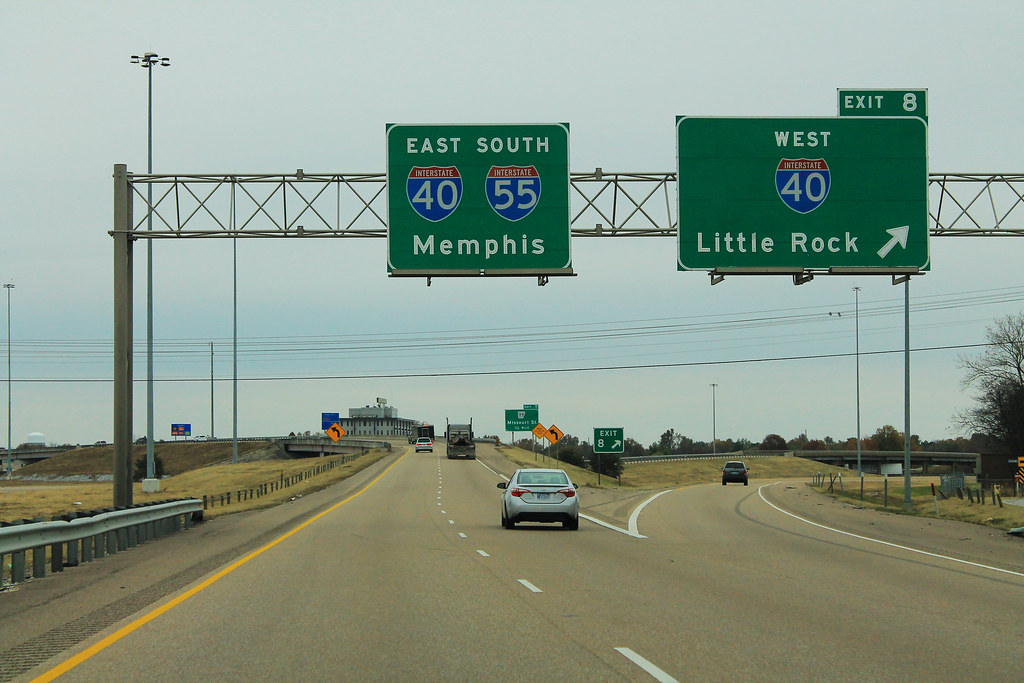
Interstate 40 (I-40) is a significant east-west Interstate Highway that spans across several states, including a 284.69-mile (458.16 km) section in Arkansas. The route enters Arkansas from the west just north of the Arkansas River near Dora, and travels eastward across the northern portion of the state, connecting several cities and towns, including Fort Smith, Clarksville, Russellville, Morrilton, Conway, North Little Rock, Forrest City, and West Memphis.
I-40 has major junctions with I-540 at Van Buren (the main highway connecting to Fort Smith), I-49 at Alma (the main highway connecting to Fayetteville and Bentonville), I-30 in North Little Rock (the Interstate linking south to Texarkana and Dallas, Texas), and I-55 to Blytheville. The highway continues into Tennessee, heading through Memphis. Overall, I-40 plays a vital role in connecting Arkansas to neighboring states and the rest of the country, serving as a major transportation route for both commercial and personal travel.

